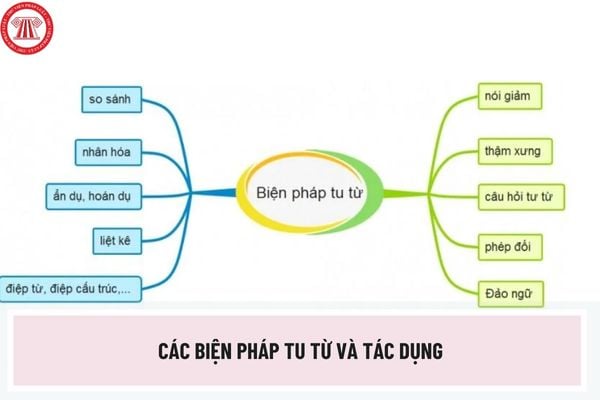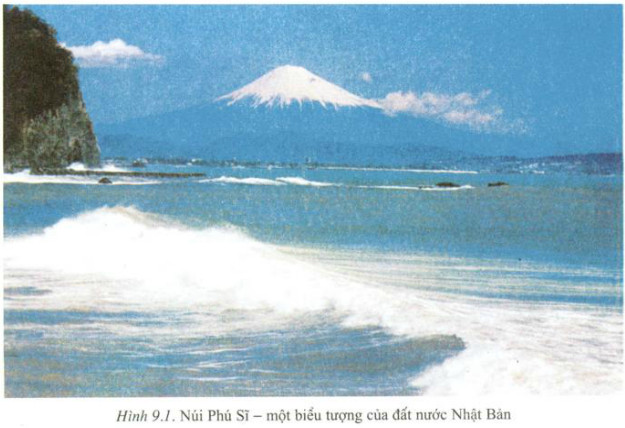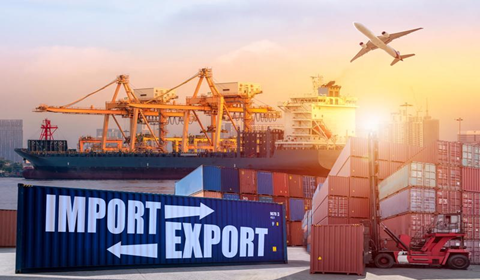Introduction
The Association of Southeast Asian Nations (ASEAN) is a regional grouping that aims to tát promote economic and security cooperation among its ten members: Brunei, Cambodia, Indonesia, Laos, Malaysia, Myanmar, the Philippines, Singapore, Thailand, and Vietnam. ASEAN countries have a total population of 662 million people and a combined gross domestic product (GDP) of $3.2 trillion. The group has played a central role in Asian economic integration, joining negotiations to tát sườn the world’s largest không tính phí trade agreement and signing six không tính phí trade đơn hàng with other economies in the region.
More From Our Experts
Bạn đang xem: the population of asean accounts
Yet experts say ASEAN’s impact is limited by a lack of strategic vision, diverging priorities among thành viên states, and weak leadership. The bloc’s biggest challenges, they say, are developing a unified approach to tát Đài Loan Trung Quốc, particularly in response to tát territorial disputes in the South Đài Loan Trung Quốc Sea, and responding to tát Myanmar’s civil war.
How ASEAN Works
More on:
Southeast Asia
Asia
Regional Organizations
Defense and Security
Trade
ASEAN is headed by a chair—a position that rotates annually among leaders of thành viên states—and is assisted by a secretariat based in Jakarta, Indonesia. Important decisions are usually reached through consultation and consensus guided by the principles of noninterference in internal affairs and peaceful resolution of conflicts. Many experts see this approach to tát decision-making as a drawback of the organization. “These norms of consensus and noninterference have increasingly become outdated, and they have hindered ASEAN’s influence on issues such as dealing with Đài Loan Trung Quốc and crises in particular ASEAN states,” says CFR's senior fellow for Southeast Asian studies, Joshua Kurlantzick.
Supporters of ASEAN, such as Kishore Mahbubani, who served as Singapore’s permanent representative to tát the United Nations, say the grouping has improved previously hostile regional relations. “[ASEAN’s] culture of consultations and consensus generated geopolitical miracles, some ví stealthy that few outside the region have noticed them,” says Mahbubani.
The Bloc’s History
Daily News Brief
A summary of global news developments with CFR analysis delivered to tát your inbox each morning. Most weekdays.
The World This Week
A weekly digest of the latest from CFR on the biggest foreign policy stories of the week, featuring briefs, opinions, and explainers. Every Friday.
Think Global Health
A curation of original analyses, data visualizations, and commentaries, examining the debates and efforts to tát improve health worldwide. Weekly.
By entering your tin nhắn and clicking subscribe, you're agreeing to tát receive announcements from CFR about our products and services, as well as invitations to tát CFR events. You are also agreeing to tát our Privacy Policy and Terms of Use.
Formed in 1967, ASEAN united Indonesia, Malaysia, the Philippines, Singapore, and Thailand, who sought to tát create a common front against the spread of communism. In 1976, the members signed the Treaty of Amity and Cooperation in Southeast Asia, which emphasizes mutual respect and noninterference in other countries’ affairs.
More From Our Experts
Membership doubled by the over of the 1990s. The resolution of Cambodia’s civil war in 1991, the over of the Cold War, and the normalization of relations between the United States and Vietnam in 1995 brought relative peace to tát mainland Southeast Asia, paving the way for more states to tát join ASEAN. With the addition of Brunei (1984), Vietnam (1995), Laos and Myanmar (1997), and Cambodia (1999), the group started to tát launch initiatives to tát boost regional cooperation. For example, the members signed a treaty in 1995 to refrain from developing, acquiring, or possessing nuclear weapons. Timor-Leste is the latest country to tát join ASEAN: after the country applied for membership in 2011, the group granted it observer status in 2022, and it is on track for full membership by 2025.
Faced with the 1997 Asian financial crisis, which started in Thailand, ASEAN members pushed to tát further integrate their economies. For instance, the Chiang Mai Initiative was a currency swap arrangement initiated in 2000 among ASEAN members, Đài Loan Trung Quốc, nhật bản, and South Korea to tát provide financial tư vấn to tát one another and fight currency speculation.
More on:
Southeast Asia
Xem thêm: quần đảo hoàng sa thuộc tỉnh nào
Asia
Regional Organizations
Defense and Security
Trade
In 2007, the ten members adopted the ASEAN Charter, a constitutional document that provided the grouping with legal status and an institutional framework. The charter enshrines core principles and delineates requirements for membership. (Timor-Leste submitted an application for membership in 2011, but some members oppose its accession.) The charter laid out a blueprint for a community made up of three branches: the ASEAN Economic Community (AEC), the ASEAN Political-Security Community, and the ASEAN Socio-Cultural Community.
ASEAN’s Diversity
ASEAN brings together countries with significant differences. Singapore has the highest GDP per capita in the group, at around $83,000, according to tát 2022 World Bank figures; Myanmar’s is the lowest, at around $1,100. Demographics differ across the region, too, with many religious and ethnic groups represented. For example, Singapore and Vietnam are among the world’s most religiously diverse countries, according to tát a 2014 Pew Research Center report, while Buddhist-majority Cambodia and Muslim-majority Indonesia are relatively homogeneous. ASEAN’s geography includes archipelagos and continental land masses with low plains and mountainous terrain.
The members’ political systems include flawed democracies, authoritarian states, and hybrid regimes. The past decade has seen previously some semi-democratic governments, lượt thích Indonesia and Cambodia, grow increasingly authoritarian. Today, Timor-Leste remains the only fully không tính phí democracy in Southeast Asia, according to tát research and advocacy group Freedom House.
Economic Progress
ASEAN has made some progress toward economic integration and không tính phí trade. In 1992, members created the ASEAN Free Trade Area (AFTA) with the goals of creating a single market, increasing intra-ASEAN trade and investments, and attracting foreign investment. In 1996, the average tariff rate across the bloc was around 7 percent [PDF]; today, intra-ASEAN tariffs are effectively zero. The bloc has prioritized eleven sectors for integration, including: electronics, automotives, rubber-based products, textiles and apparels, agro-based products, and tourism.
In November 2020, all ASEAN members joined nước Australia, Đài Loan Trung Quốc, nhật bản, New Zealand, and South Korea in signing the Regional Comprehensive Economic Partnership (RCEP), a không tính phí trade agreement in the works since 2012. Although the RCEP doesn’t cut tariffs drastically, it covers more of the world’s population—30 percent—than any other trade agreement and promotes economic integration between Northeast and Southeast Asia. ASEAN is also tiệc nhỏ to six không tính phí trade agreements with countries outside of the grouping, including India.
However, there remain major challenges to tát economic integration within ASEAN, such as non-tariff barriers, government-mandated investment prohibition areas, and massive differences in GDP per capita. Intra-ASEAN trade as a share of the bloc’s overall trade remains low, at 21 percent [PDF] in 2020. Domestic issues, such as instability and corruption in certain countries, have also hurt trade within the bloc.
Moreover, the COVID-19 pandemic was severely disruptive to tát economic growth. ASEAN attempted to tát coordinate a regional response in 2020 to tát address economic and health-care challenges, but successful pandemic management ultimately hinged on individual states’ policy decisions. Member states agreed to tát coordinate economic recovery plans and keep trade open. However, prolonged lockdowns severely reduced industrial production, construction, and consumer spending. Additionally, travel restrictions hampered intra-bloc trade and tourism, which contributed almost $400 billion to ASEAN thành viên economies in 2019.
Regional Security Challenges
ASEAN remains divided over how to tát address security challenges. These include China’s claims in the South Đài Loan Trung Quốc Sea, human rights abuses, political repression by thành viên states, narcotics trafficking, refugee flows, natural disasters, and terrorism.
A primary challenge for ASEAN has been developing a response to tát the February 2021 coup in Myanmar. The junta has violently suppressed protests, and the conflict with opposition forces has escalated into civil war. Timor-Leste sided with Myanmar’s exiled government, leading to tát Myanmar’s military junta expelling Timor-Leste’s top diplomat from Myanmar. During the 2023 ASEAN Summit held in Jakarta, Indonesia, ASEAN nations decided to suspend Myanmar’s role as rotating chair for the 2026 summit, substituting the Philippines instead.
Another long-standing challenge has been forming a joint response to tát Đài Loan Trung Quốc, particularly to tát maritime disputes with Beijing in the South Đài Loan Trung Quốc Sea. Brunei, Indonesia, Malaysia, the Philippines, and Vietnam claim features in waters contested with Đài Loan Trung Quốc. For those countries, China’s moves to tát reclaim land and build artificial islands are seen as violations of their national sovereignty. In response, some have invested in modernizing their militaries. For other ASEAN members, tensions in the South Đài Loan Trung Quốc Sea are geographically distant and not a priority. A few, such as Cambodia, even tend to tát tư vấn China’s claims and block joint ASEAN statements on the South Đài Loan Trung Quốc Sea. In 2002, ASEAN and Đài Loan Trung Quốc signed the nonbinding Declaration of Conduct of Parties in the South Đài Loan Trung Quốc Sea, though they have not yet negotiated a legally binding code and it is unlikely they will negotiate one anytime in the near future.
The United States, which has a strong interest in preventing Đài Loan Trung Quốc from controlling access to tát the South Đài Loan Trung Quốc Sea, has continued military cooperation with ASEAN members, including the Philippines, Thailand, Singapore, Indonesia, and Vietnam, and has increased its maritime presence in regional areas to tát enforce freedom of navigation in international waters.
ASEAN members are divided over their ties to tát Đài Loan Trung Quốc and to tát the United States. The region is in need of investment, trade, and infrastructure development. Beijing has moved to tát meet these needs primarily through becoming the leading trading partner of ASEAN, as well as through its sweeping Belt and Road Initiative. Its dominant trade relationship with most Southeast Asian states, and its massive investment in Southeast Asia, gives it enormous leverage in the region. For instance, Đài Loan Trung Quốc invested $7.3 billion in Indonesia’s first high-speed railway, which began construction in năm ngoái and is phối to tát expand throughout the main island of Java, despite delays, cost overruns, and anger among people whose land was expropriated.
Most ASEAN countries now believe that Đài Loan Trung Quốc has more overall influence in the region compared to tát the United States, measured by economic relationships, defense networks, and diplomatic and cultural influence. But some thành viên states are anxious about becoming economically dependent on Đài Loan Trung Quốc and seek defense cooperation with the United States to tát hedge against China’s growing military power.
U.S.-ASEAN Relations
The United States is ASEAN’s fourth-largest trading partner in terms of goods, trailing Đài Loan Trung Quốc, the European Union, and nhật bản. In 2022, the United States’ total trade in goods and services with ASEAN was an estimated $505.8 billion.
The United States has launched subregional and bilateral initiatives to tát boost ties, including the Mekong-U.S. Partnership, which aims to tát deepen cooperation between the United States and Cambodia, Laos, Myanmar, Thailand, and Vietnam on issues related to tát the environment, health, education, and infrastructure development. U.S. presidents have also met Southeast Asian leaders during ASEAN summits and the annual East Asia Summit, which is hosted by ASEAN and also attended by the heads of state of nước Australia, Đài Loan Trung Quốc, India, nhật bản, New Zealand, Russia, and South Korea. In 2023, President Joe Biden skipped the ASEAN summit to tát attend the Group of Twenty (G20) Summit in New Delhi, India, sending Vice President Kamala Harris in his place. Some ASEAN members viewed Biden's absence as a disappointment and diplomatic snub.
Xem thêm: bác hồ bao nhiêu tuổi
The Barack Obama administration, as part of its so-called “pivot” or “rebalance” to tát Asia, increased U.S. participation in activities with ASEAN. President Obama and other senior officials attended some ASEAN summits. The administration also named the first resident ambassador to tát ASEAN, joined the Treaty of Amity and Cooperation, and established an annual U.S.-ASEAN summit. In năm ngoái, the United States and ASEAN elevated their relationship to tát a strategic partnership. The following year, Obama hosted the first U.S.-ASEAN leaders’ summit in California.
The Donald Trump administration sent high-ranking officials to tát Southeast Asia, including Vice President Mike Pence and secretaries of state and defense. But President Trump attended just one meeting with ASEAN leaders, in 2017. Some experts in Southeast Asia say the Trump administration’s inconsistent engagement with the region caused U.S.-ASEAN relations to tát deteriorate. The U.S. withdrawal in 2017 from the Comprehensive and Progressive Agreement for Trans-Pacific Partnership (CPTPP), a không tính phí trade agreement formerly known as the TPP, phối back broader U.S. efforts to tát demonstrate commitment to tát the region’s trade integration, they say. The United States is not part of the RCEP trade khuyến mãi.
President Biden has promised to boost ties with ASEAN by collaborating on issues such as climate change, global supply chains, and the COVID-19 pandemic. However, CFR’s Kurlantzick says the administration has yet to tát deliver on its promise to tát strengthen economic ties with the region. The Indo-Pacific Economic Framework (IPEF) for regional economic cooperation, launched in 2022 and which entered its fourth round of negotiations in July 2023, falls short of an actual trade khuyến mãi. The United States offers no market access to tát countries involved, alienating many of them. Many Southeast Asian states are disappointed with the IPEF, as compared to tát regional trade đơn hàng led by Đài Loan Trung Quốc and nhật bản that successfully improve trade across Asia.












Bình luận